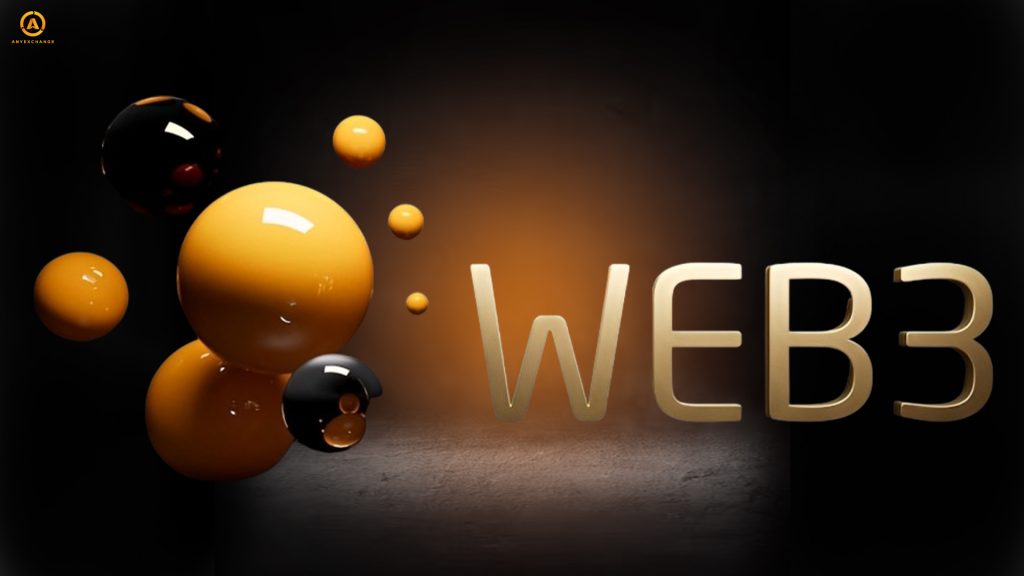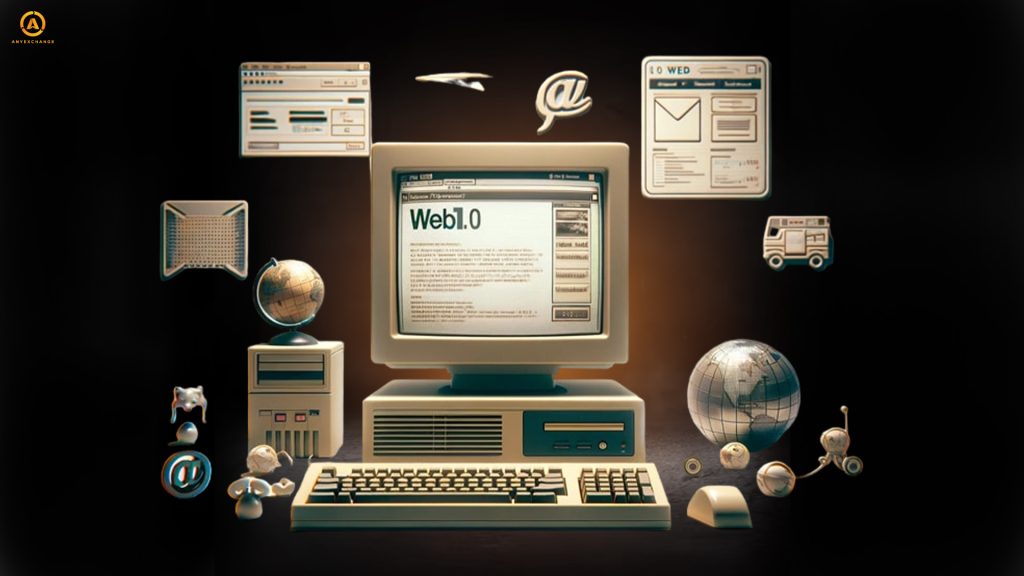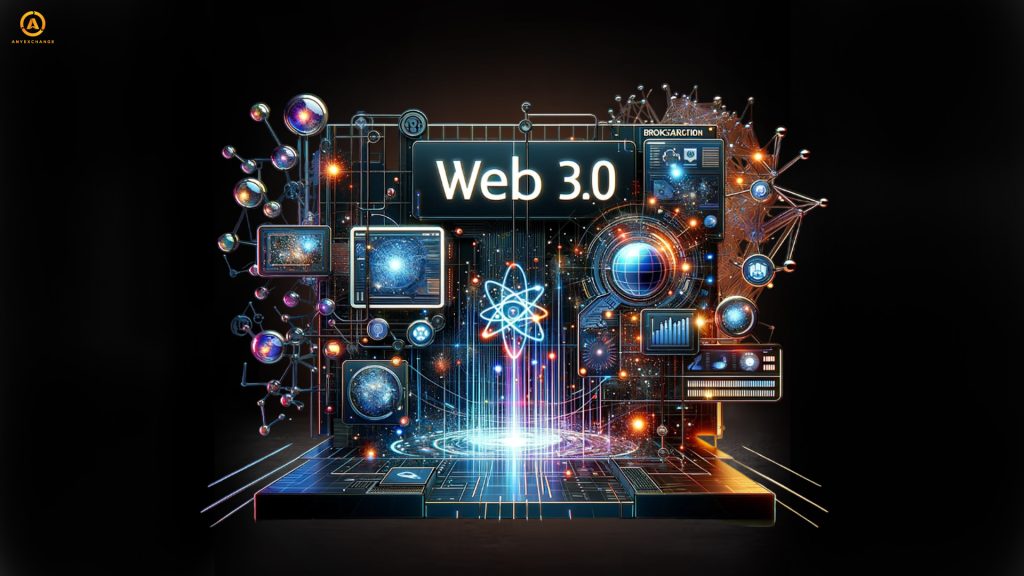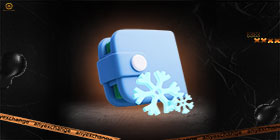
We live in the era of Web2. Thanks to the next civilizational turn, we have access to vast amounts of information and digital social interaction.
However, personal data and the products of the creativity and activity of all humanity on the Web are controlled by a limited number of giant corporations. Corporations influence the flow of information and the direction of public consciousness, promoting ideas favorable to themselves or censoring uncomfortable topics.
Web3 is the answer to this state of affairs. Shifting the paradigm of Web2, the emerging Web3 offers the concept of new, more advanced digital connections. We are witnessing the creation of an Internet that is owned by users rather than corporations, expanding and deepening humanity’s understanding of interaction with the world around us. And today we stand at the crossroads of digital innovation, where the familiar Web2 world is undergoing a qualitative transformation.
Let’s take a closer look at how Web3 will change the Internet through today’s evolving technologies, how the decentralization of the Internet will be realized with the arrival of Web3, and what role virtual worlds may play in the coming developments.
Evolution of the Internet
The Internet is a revolutionary technology that has overturned humanity’s perceptions of the possibilities of social interaction. Thanks to the Web era, the population of our planet has gained almost unlimited access to vast amounts of information, communication, and value exchange. The world has rushed to social networks, trading platforms, digital commerce and monetary relationships. This shift in perception has been so rapid that we cannot imagine our lives any other way.
Before we look at the impact of blockchain and the meta-universe on Web3, let’s take a look back at where it all started.
Web 1.0. The Internet for reading

The first stage of the development of the Internet historically corresponds to the period 1990-2004. Back then, the Web consisted of static sites created by companies or individual enthusiasts. They were available to a limited number of users and did not involve any interaction.
The Internet owes its origin to Sir Tim Berners-Lee, a British scientist and author of numerous developments in the field of information technology. He is considered the inventor and principal developer of the World Wide Web (WWW). In 1989, while working on the internal document management systеm at the Swiss laboratory CERN, he came up with the concept of a global hypertext project that evolved into the global Internet we know today. It was he who created the protocols that form the basis of the World Wide Web. Today, Berners-Lee continues to improve and develop his brainchild as the current head of the World Wide Web Consortium.
Web 2.0. The Internet for reading, writing, and interacting

The beginning of the Web’s second phase was marked by the emergence of social networks, platforms for users to post content and communicate. Companies encouraged network members to interact, driving traffic and generating revenue through advertising. This created a model in which social networking companies began to generate huge revenues from user activity without giving them anything in return other than a pleasant pastime. The Web2 era began in 2004 and continues to dominate to this day.
Web 3.0. The Internet is for reading, writing, interacting, and owning.

The originator of the Web3 idea is Polkadot creator and Ethereum co-founder Gavin Wood. In 2014, he extrapolated the idea of decentralized networks to the global Internet, suggesting that this approach would solve the trust problem and restore fairness. If we remove from the world of digital interaction companies that monopolize all user-created content, ideas and developments while making billions, the Internet will become free and fair. Web3, based on the principles of decentralization, will allow all participants in the global network to obtain and validate the rights to own and monetize the products they have created. The integration of the meta-universe into Web3 will, in turn, facilitate and accelerate the development of a new digital reality, providing humanity with a vibrant, immersive world and positive user experience.
Blockchain and Virtual Worlds in Web3
The concepts of meta-universe and blockchain technologies are integral parts of the Web3 concept, but each brings a specific ideology.
Blockchain technology brings to Web3 the idea of decentralization, which implies the absence of monopoly and censorship, and is based on the principles of democracy and freedom of choice. Individuals interact with society based on their own preferences, predetermined and accepted rules (consensus) and the preservation of personal boundaries.
The meta-universe as part of the Web3, through the idea of immersion, reveals to the user a new and exciting virtual world in all its diversity, providing conditions for the expression of individuality through the realization of creative possibilities, blurring the boundaries between countries and continents, and opening access of perception and intelligence to previously inaccessible worlds.
Are the Meta-Universe and Web3 the same?
There is a perception that the meta-universe and Web3 are the same thing. Yes, Web3 iterations of meta-universes have emerged to date, but the two concepts have some differences.
Web3 is the concept of a decentralized version of the Internet. Based on this, it carries all the attributes of blockchain technology, acquiring the following characteristics and benefits of Web3 for users:
- Privacy. Blockchain and digital identity in Web3 interact in such a way that the person himself personally disposes of his personal information without entrusting it to third parties (as happens in Web2, when it is impossible to perform any action in the digital environment without providing personal data). Here, the user is identified by means of decentralized digital identity verification systems and ZKP technologies, and the user discloses only that part of the information he or she is willing to provide. Web3 is committed to protecting the privacy of individuals in the digital world.
- Transparency and compliance. Data storage in a decentralized registry and its immutability ensure the transparency of all processes. The rules of interaction between network participants and transactions are regulated by smart contracts, the terms of which are clear to users.
- Variety of DeFi tools and embedded payments. This advantage also has a huge impact of Web3 on the entire Internet economy. The user is able to make any kind of payment, invest and profit from a single account with minimal fees.
- Democratized governance through DAOs. Governance through decentralized autonomous organizations gives participants the right to participate in decision making, from the life of the community to the functionality of decentralized applications in Web3.
Meta-universes is a concept that is developing in parallel with Web3 and represents a set of interconnected virtual worlds in which users, through their second selves (avatars), can interact with the objects of the digital universe and with each other through the technical means of virtual and augmented reality. The meta-universe tries to reproduce the daily physical life of a human being in the digital space. Going to the store and working, attending concerts and exhibitions, studying at the university and cooking, building a house, having sex, traveling or having a beer with friends — everything can be reconstructed in the digital ecosystem of the meta-universe. The trend of technology is that it is the meta-universe that will ensure the positive impact of Web3 on user experience.
It will be unrivaled in terms of positive user experience and accessibility. And while the gaming industry, which has a solid foundation of monetization and revenue mechanisms thanks to blockchain technology, is working hard to make gameplay more immersive, the meta-universe will provide participants with a unique user experience, easy access, and an engaging pastime.
Existing examples of Web3 meta-universe projects today, such as The Sandbox and Decentraland, demonstrate fidelity to the concept of decentralization while maintaining strong market positions and excellent financial results.
The integration of the Web3 ecosystem and the Meta Universe has made the tokens of these platforms (SAND and MANA) some of the most attractive altcoins this year according to cryptocurrency experts.
However, the vast majority of Meta Universe projects are still on the Web2 level, as their investors are large companies. For example, Facebook, Microsoft, Roblox, Google, Amazon, Nvidia and others. That is, they are built on the principles of centralization and represent separate ecosystems that compete with each other rather than seeking integration and the formation of a single meta-space. As a result, their development does not inspire much enthusiasm among those who support the idea of a free and fair Internet.
How Web3 Technologies Can Improve the Metaverse
If, in the future, Web3 and the meta-universe move toward effective convergence and mutual integration, it will undoubtedly contribute to the development of meta-universes. Participants in virtual worlds will be able to take full advantage of decentralization:
- Web3 and digital assets in the meta-universe will allow users to confirm ownership of virtual objects via NFT (which has been successfully implemented for years in Decentraland, among others), monetize their actions, and make global payments with minimal fees;
- Web3 and smart contracts in the meta-universe, along with decentralized data storage and the most advanced encryption methods, will ensure fast and secure transactions;
- Users will be part of a democratic and fair ecosystem where they are no longer just a means for corporations to make money.
Conclusion
The Internet, as one of the most valuable technological tools available to mankind, continues to evolve to keep up with the times. Blockchain, meta-universes, artificial intelligence, and quantum computing are all evolving before our eyes, creating a digital future for humanity.
The technology trends in Web3 and meta-universes have a slightly different focus: Web3 developers are focused on technical optimization and democratization of the systеm as a whole, while meta-universe creators are focused on immersive end-user experience and revenue generation for host companies.
Having said that, both models are in their early stages of development and will take some time to catch on.
So to conclude this article, we can see a successful convergence of both technologies when humanity is ready to take the Internet out of the control of the big players. And then the Internet will be transformed into an exciting and fair meta-universe, free of censorship and monopoly. We hope to live to see this prospect.
Thank you for your attention.
AnyExchange is an exchanger that allows you to convert cryptocurrencies into electronic or cash money at the best exchange rate. Also, fast and anonymous money transfers worldwide are available on our platform.





